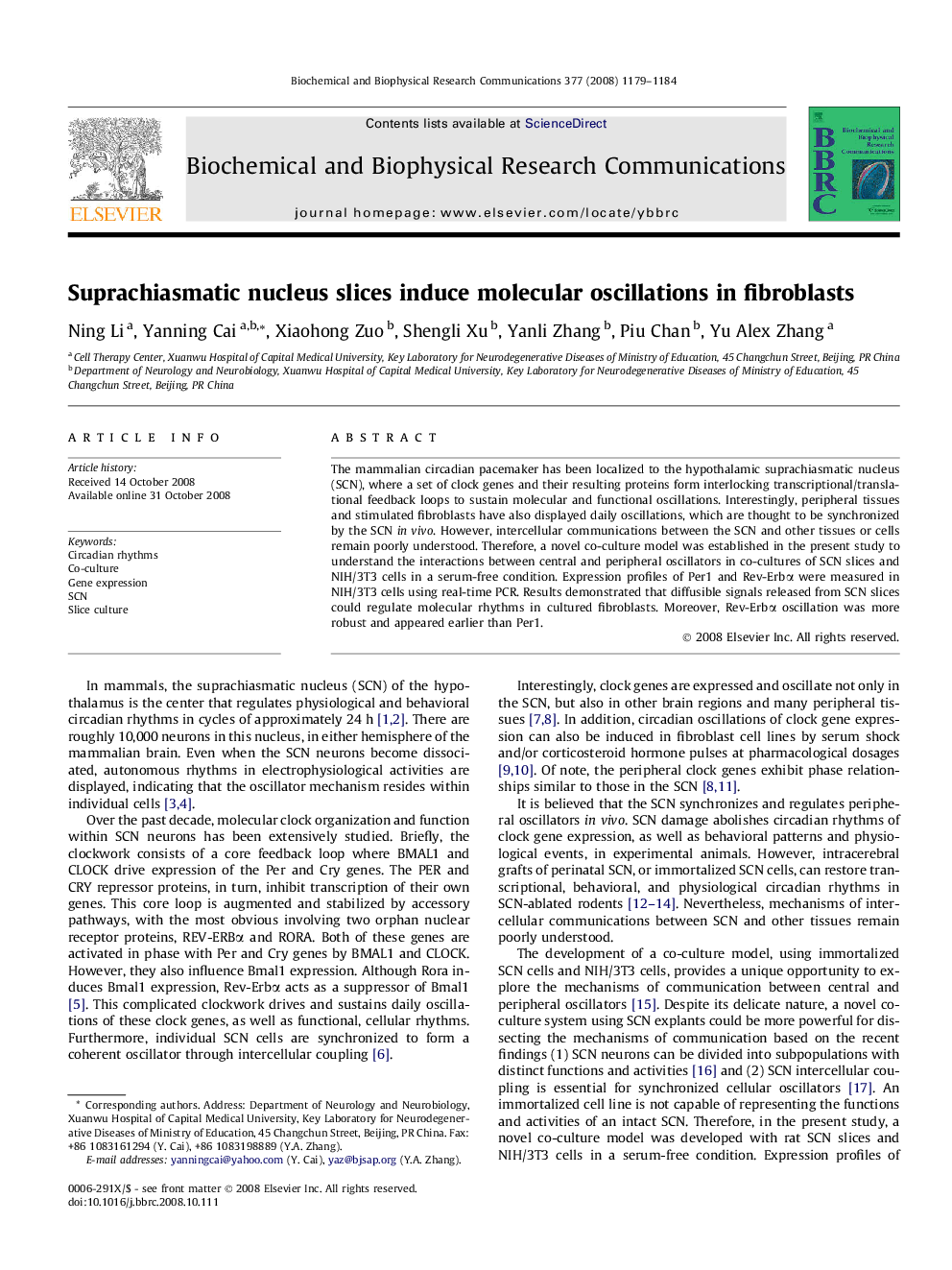| Article ID | Journal | Published Year | Pages | File Type |
|---|---|---|---|---|
| 1934100 | Biochemical and Biophysical Research Communications | 2008 | 6 Pages |
The mammalian circadian pacemaker has been localized to the hypothalamic suprachiasmatic nucleus (SCN), where a set of clock genes and their resulting proteins form interlocking transcriptional/translational feedback loops to sustain molecular and functional oscillations. Interestingly, peripheral tissues and stimulated fibroblasts have also displayed daily oscillations, which are thought to be synchronized by the SCN in vivo. However, intercellular communications between the SCN and other tissues or cells remain poorly understood. Therefore, a novel co-culture model was established in the present study to understand the interactions between central and peripheral oscillators in co-cultures of SCN slices and NIH/3T3 cells in a serum-free condition. Expression profiles of Per1 and Rev-Erbα were measured in NIH/3T3 cells using real-time PCR. Results demonstrated that diffusible signals released from SCN slices could regulate molecular rhythms in cultured fibroblasts. Moreover, Rev-Erbα oscillation was more robust and appeared earlier than Per1.
